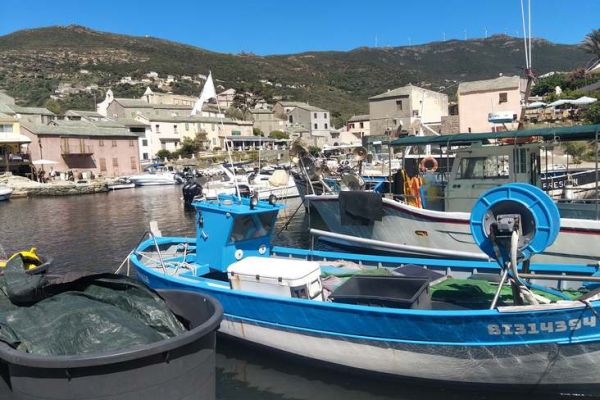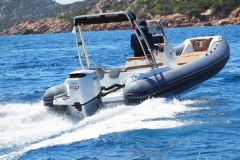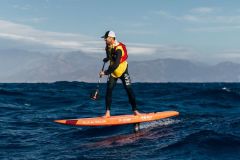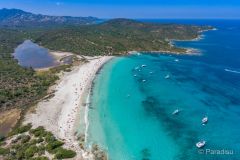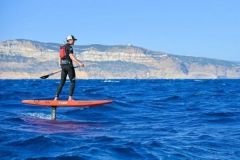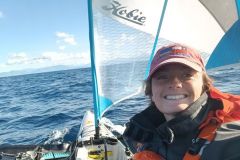Centuri takes us to the west coast of Cape Corsica. Here you'll find a marina suitable for boats up to 10 meters in length, with a maximum authorized draught of 2 meters. With a westerly wind, it's possible to drop anchor in depths of between 5 and 8 meters, on a sandy bed stretching from the harbor to the east of the island of Capense, creating the opportunity for a peaceful stopover. You'll need to remain vigilant, as some areas may present rocky bottoms, requiring the use of a mooring rope.
Once ashore, you'll discover that this charming miniature port has a tradition that goes back to the 18th century: red lobster fishing. Here, the boats are neatly lined up, and the harbour is lined with restaurants, each more welcoming than the last. Each one features the famous crustacean on its menu as a main course, and tourists love it. Several measures have been put in place to preserve the species, which is threatened with extinction.
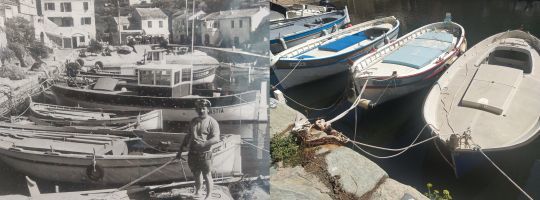
Identification of lobsters
There are some twenty species of lobster in the world. The red lobster, fished off the coast of Centuri, is easy to recognize. In front of the fish tank of a harbour restaurant, a seasonal aquaculturist introduces us to the crustacean, confidently holding it by the dorsal part of its body, taking care to avoid its claws and legs, so as not to stress it. The animal has two very large antennae that can reach up to 42 centimetres. As it grows, this large, clawless decapod molts. It renews its entire skeleton, enabling it to grow by 15 to 30% each time. It can thus reach 30 to 50 centimetres in length, weighing up to 4 kilos. Its chitinous carapace, enhanced by yellowish spots, shelters a segmented body adorned with spines. The thorax carries three pairs of jaw legs and five pairs of locomotor legs. To differentiate the female from the male, we are told, you need to look at the legs, which are larger and more robust on the male. As for the carapace on the ventral side, the one with a hollow shelters the eggs, indicating that it's a female.
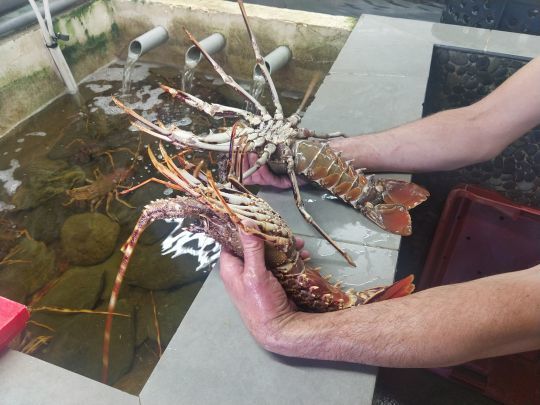
Environment and regulations
In the rocky waters of Cap Corse, the crustacean has found its kingdom. It can be found at depths of up to 150 meters. This animal has the particularity of being a migratory marine animal that appreciates the climate of warm, sunny waters. As stormy weather approaches, they migrate offshore, walking in single file along the ocean floor, thanks to the contact of their antennae. When the good weather returns, they make the opposite journey, returning to shallower waters. An opportunity for the fishermen to take center stage. On the southern plateau of Centuri, there are dedicated fishing zones. Standards must be respected to give the lobster time to reproduce. Seasonal fishing is only permitted from April to October. Lobsters must be at least 9 centimetres long; if they are undersized, they are returned to the water.
Fishing techniques
In Centuri, we learn that 4 boats are now fishing for red lobster. Some fifty years ago, twenty or so fishermen set sail each morning to bring in between 50 and 100 kilograms of the precious delicacy every day. In those days, creel fishing was the preferred method. The old-timers tell us that the traps were woven from myrtle, a Corsican shrub whose blue-black berries are also used in cooking to flavor dishes and make liqueurs. Today, this ancestral technique has disappeared in favor of net fishing, except for a few enthusiasts who make traps from a PVC barrel.
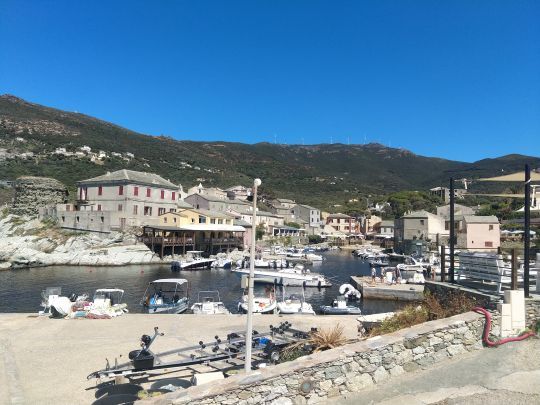
Underneath their innocuous appearance, traps are formidable fishing gear that can trap the inhabitants of the seabed. These cylindrical containers are fitted with one or more openings. Known as gutters, these openings are designed to allow the animal to enter the trap but make it very difficult to leave. The main advantage of this technique is the impeccable quality of the product, since the animals can remain alive once captured. To attract crustaceans, each fisherman cultivates his own recipe: heads, giblets or even the remains of fish such as gurnard or mackerel, wrapped in a fine cloth and securely lashed to the trap. In general, the stronger the smell, the more curiosity is aroused. When the trap is launched, the device must be properly weighted and attached to a buoy with a length of rope equal to twice the height of water at high tide measured on site. Wait at least 24 hours before lifting.
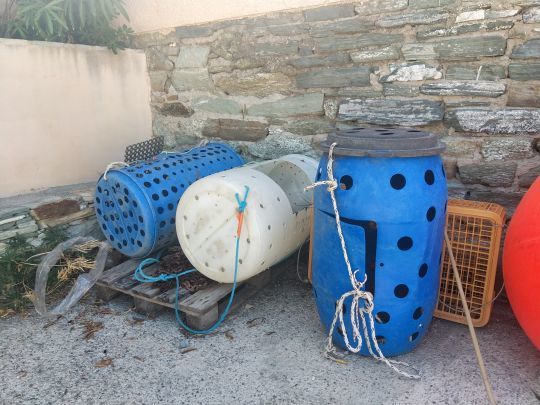
As soon as they return to the coast, the fishermen take off their uniforms and put on their restaurant outfits. A trade that has been practiced in Centuri for several generations. Today, the average price of lobster is 185 euros per kilo, but there is much debate about the authenticity of the Corsican lobster served here in a variety of sauces. sometimes it's lobster from the Maghreb countries. It can be live or frozen", we're told. The solution to all suspicion? First of all, the price: a lobster menu costing less than 50 euros will unquestionably come from elsewhere. And everyone agrees: local lobster should be banded for greater clarity
And what about preserving the species?
Lobster fishing on the Corsican coast has been intensive for several decades. Overfishing has reduced the size of the individuals, which are not always given the time they need to reach adulthood and reproduce in abundance. While the majority of professional fishermen respect the minimum authorized catch size, certain abuses sometimes endanger the species. Underwater reserves and fishing zones therefore enable partial renewal of stocks. To prevent overfishing, a CNRS laboratory in Bastia has succeeded in reproducing the conditions in which lobsters grow on the seabed. Ultimately, the aim is to achieve ecological restoration by introducing juveniles, thus encouraging the return of biodiversity in different areas, until stocks recover.
In Centuri, as you'll have gathered, everyone has a real affection for the red lobster, a crustacean that has become a heritage to be preserved. If you're curious, many of the local restaurateurs, who like to pay homage to their forebears, will tell you all about the history of lobster fishing in this picturesque fishing port, which has become a Corsican must-see for all yachtsmen.

 /
/ 